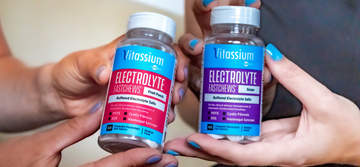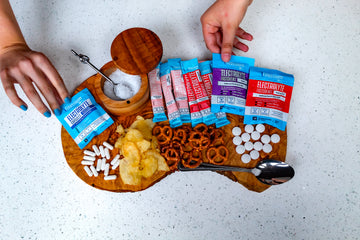
We’re introducing our Caretaker Perspective Series, a group of blogs that share the experiences of people who care for patients with dysautonomia and POTS. Here, Stacey Greenberg, whose daughter manages EDS and POTS, tells a story about breakfast when her daughter’s condition leaves her too nauseous to eat.
It’s 7:45 a.m. The school bus leaves in 30 minutes, but right now, I just want my daughter to eat.
As someone who manages Ehlers-Danlos Syndrome (EDS) and postural orthostatic tachycardia syndrome (POTS), my daughter deals with frequent bouts of nausea, and today, it’s hit her in full force. Her stomach is in so much pain that she says no to everything. “Cereal?” I ask. No. “Toast?” No. Eggs, yogurt, fruit? All a very blunt “No, mom!”
Moments like these give me glimpses into the seemingly-impossible battles people like my daughter face every day. You see, in this situation, there is no win for her. If she does nothing, her stomach pain is sure to increase, making it even harder to eat at lunch time, which is almost four hours later. If she tries to force down food, she risks making the nausea worse.
And yet if she decides to give in and skip school, she’ll fall behind in her classes. Missed classes require makeup work, which leads to more missed class, and thus more makeup work. It’s a vicious cycle that quickly spirals out of control for someone managing a chronic condition like POTS.
But far more worrisome to my daughter are the other kids and their questions of “where were you yesterday?” My daughter—only 10 years old at the time—has always hated this question, and still often flatly refuses to answer it. Because answering it means she has to talk about her EDS and POTS. And when she does that, it opens the door to an avalanche of prying follow-ups that deliver a lot of unwanted attention.
So her solution to a day like today is to simply power through. Accept the discomfort, deal with it and go to class. In her eyes, it’s better to tolerate the enemy she knows than to risk embarrassment in front of the other kids.
This breaks my heart every time.
As a mother, and as someone who has been told by her cardiologist that my daughter needs to eat something, I desperately want to take the reins for a few minutes and make her eat. But I know this is an impossible task. Years of fighting through some pretty awful days have built in my daughter a stubbornness and grit that is nothing short of awe-inspiring. If she sets her mind to something—say going to school despite her intense stomach pain—that’s what she is going to do. No amount of coaxing is going to get her to say otherwise.
I have immense respect for my daughter and her spirit, which is not something I hear most adults say about 10-year-olds. But it’s true. I’m so proud of her for choosing to not only survive but thrive with her condition, pursuing good grades and extracurricular activities with all she has to give.
Still, it does make moments like today pretty tough.
Eventually, we settle on potato chips for breakfast, which my daughter consumes slowly, savoring the salt, while seemingly coming back to life. It dawns on me how “potato chips for breakfast” could seem strange to most parents, but after years of constant advice to eat more salt, it’s become normal in our house. French fries, pretzels, salty peanuts; it’s all been breakfast cuisine at some point. Today, it’s the chips. And after adding two SaltStick Vitassium capsules, my daughter is at last looking ready to take on the day.
I breathe a sigh of relief as the bus leaves, with my smiling daughter on board. With something like POTS, it’s impossible to take a good day for granted, and so I savor the moment and smile to myself knowing today is a good day.
About the author: Stacey Greenberg discovered SaltStick five years ago when her daughter was diagnosed with POTS, and her cardiologist recommended SaltStick Caps. When Vitassium launched in 2016, her daughter made the switch, and she has been a fan ever since. A year later, Stacey’s son was diagnosed with POTS, and she knew immediately to start him on Vitassium as well. Today, Vitassium allows both of Stacey’s children to participate in school and extracurricular activities because they are less dizzy and less tired.
In addition to her role as a fantastic mom, Stacey is also the Vitassium Brand manager at SaltStick. When you call or email with questions about SaltStick Vitassium or the Vitassium Club, she is the person that comes to the rescue. A true believer in the benefits of Vitassium due to her double first-hand experiences, Stacey spends time reaching out to doctors and support groups, providing information and samples, and spreading the word that SaltStick Vitassium is great!







